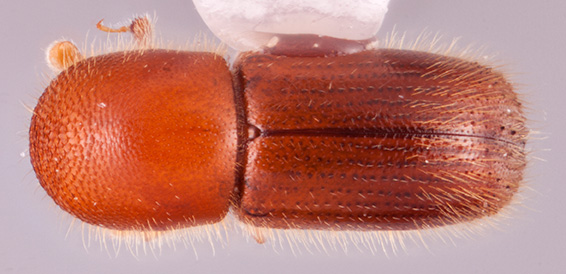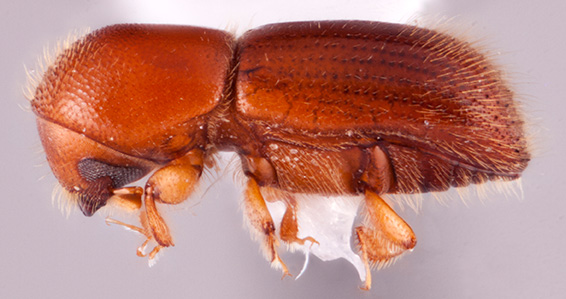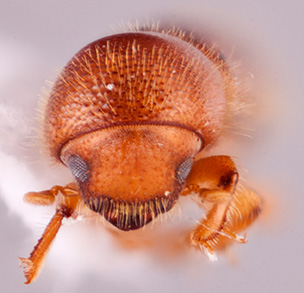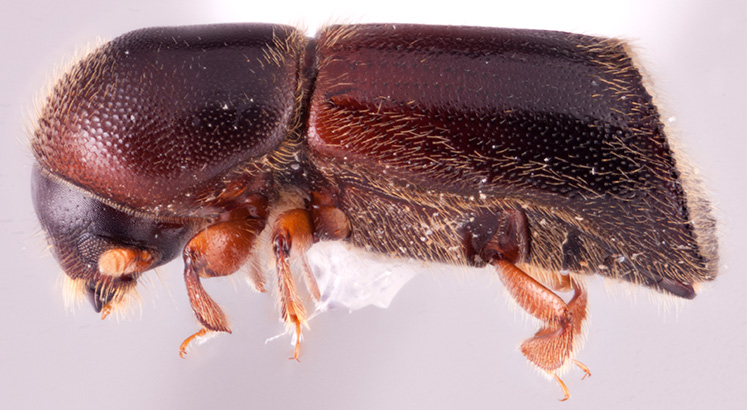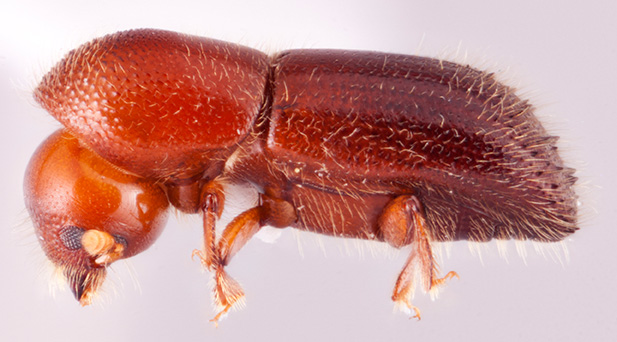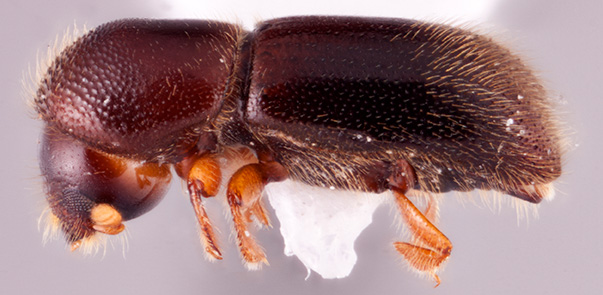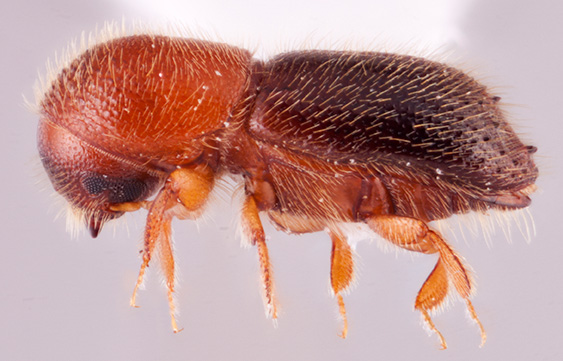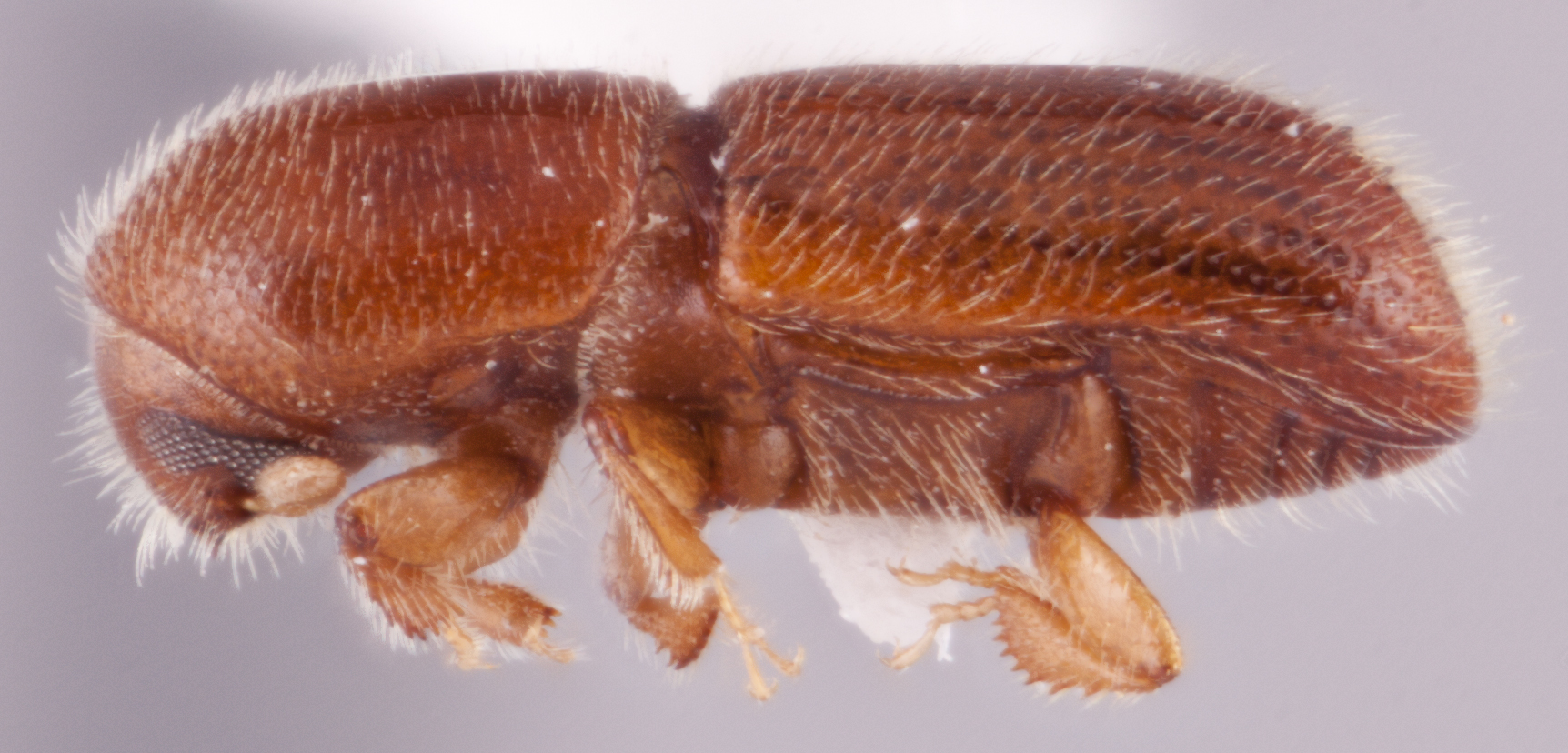Cyclorhipidion
|
Cyclorhipidion distinguendum; R.K. Osborn |
|
Cyclorhipidion distinguendum; R.K. Osborn |
|
Cyclorhipidion distinguendum; R.K. Osborn |
|
Cyclorhipidion distinguendum; R.K. Osborn |
|
Cyclorhipidion truncaudinum; R.K. Osborn |
|
Cyclorhipidion denticauda; R.K. Osborn |
|
Cyclorhipidion pilipenne; R.K. Osborn |
|
Cyclorhipidion pruinosulum; R.K. Osborn |
|
Cyclorhipidion japonicum; R.K. Osborn |
Taxonomy
Cyclorhipidion Hagedorn, 1912b: 355.
Synonyms
Terminalinus Hopkins, 1915a: 10. Wood and Bright, 1992: 697.
Kelantanius Nunberg, 1961: 621. Wood, 1986: 83.
Notoxyleborus Schedl, 1934b: 84. Smith et al., 2020: 39.
Diagnosis
Body length from 1.70−5.50 mm long, very stout to very elongate (2.19−3.40) times as long as wide with elytralelytral:
pertaining to the elytra
apexapex:
point or edge furthest from the body; opposite of base
 entire. Cylcorhipidion is a morphologically variable genus, however the species can largely be distinguished by their distinctive body appearance with most of body covered with dense pubescencepubescence:
entire. Cylcorhipidion is a morphologically variable genus, however the species can largely be distinguished by their distinctive body appearance with most of body covered with dense pubescencepubescence:
fine short setae
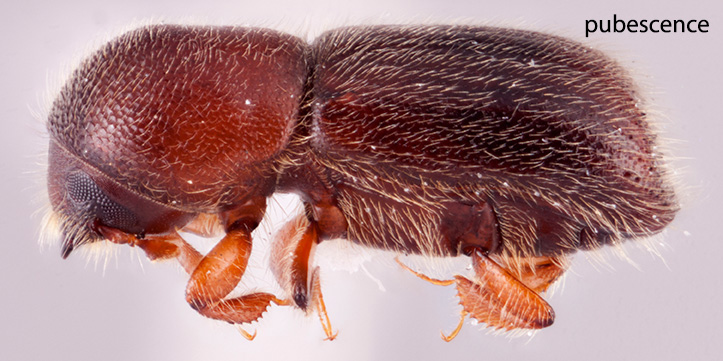 and very abundant minute punctures; elytral discdisc:
and very abundant minute punctures; elytral discdisc:
the flat central upper surface of any body part (e.g. pronotum and elytra) with confusedconfused:
with confusedconfused:
of markings, having indefinite outlines or running together as lines or spots without definite pattern; usually referring to punctures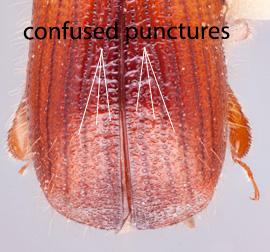 interstrial punctures; pronotum and elytraelytron:
interstrial punctures; pronotum and elytraelytron:
the two sclerotized forewings of beetles that protect and cover the flight wings
rounded, typically with no conspicuous edges or carinas; antennal clubclub:
the broadened, flattened end of antenna, in Xyleborini comprised of three segments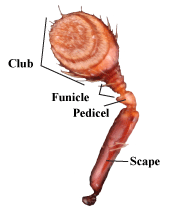 type 3 (types 4 and 5 rare); visible scutellumscutellum:
type 3 (types 4 and 5 rare); visible scutellumscutellum:
a shield-like sclerotized plate located at the midpoint of the elytral base
, contiguous procoxae and lack of mycangial tufts. Several species have obliquely truncateobliquely truncate:
nearly truncate but rounded not flat in lateral view
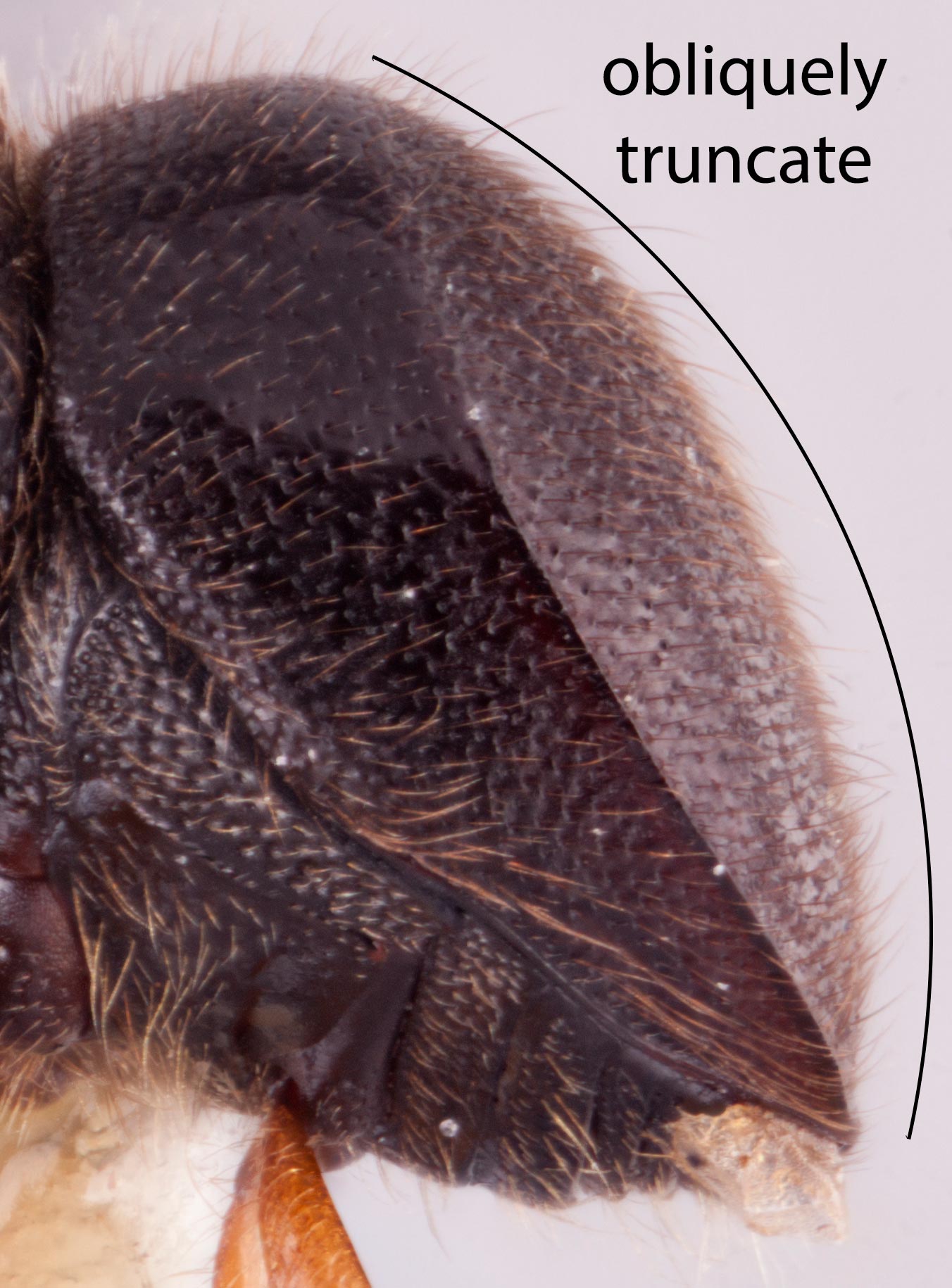 elytralelytral:
elytralelytral:
pertaining to the elytra
declivities.
Fraudatrix and Truncaudum are very similar to small Cyclorhipidion species and can be distinguished by the type 2 antennalantennal:
pertaining to the antennae
club. Tricosa is also similar to small Cyclorhipidion and can be distinguished by the distinctly triangular protibiaeprotibia:
tibia of the first pair of legs
.
May be confused with
Anisandrus, Dryoxylon, Fraudatrix, Tricosa, and Truncaudum
Distribution
Occurring in temperate and tropical forests worldwide with the exception of South America. Several species have been introduced to the United States (Hoebeke et al. 2018Hoebeke et al. 2018:
Hoebeke ER, Rabaglia RJ, Kniacute;žek M, Weaver JS. 2018. First records of Cyclorhipidion fukiense (Eggers) (Coleoptera: Curculionidae: Scolytinae: Xyleborini), an ambrosia beetle native to Asia, in North America. Zootaxa 4394: 243-250. https://doi.org/10.11646/zootaxa.4394.2.7).
Gallery system
Usually consists of an unbranched entrance tunnel leading to a single narrow brood chamber, which may be quite large, in the longitudinal plane (Browne 1961bBrowne 1961b:
Browne FG. 1961b. The biology of Malayan Scolytidae and Platypodidae. Malayan Forest Records 22: 1-255., Hulcr and Cognato 2013Hulcr and Cognato 2013:
Hulcr J, Cognato AI. 2013. Xyleborini of New Guinea: a taxonomic monograph. Thomas Say Publications in Entomology, Entomological Society of America, Lanham, Maryland, 176 pp.). However, in C. perpilosellum, the gallery system has a few branches in the horizontal plane with small, irregular brood chambers (Browne 1961bBrowne 1961b:
Browne FG. 1961b. The biology of Malayan Scolytidae and Platypodidae. Malayan Forest Records 22: 1-255.).
Remarks
Some species of Cyclorhipidion have a strong host preference for trees of the family Fagaceae. These species occur especially in areas where this family is abundant in the forests (Beaver et al. 2014Beaver et al. 2014:
Beaver RA, Sittichaya W, Liu L-Y. 2014. A synopsis of the scolytine ambrosia beetles of Thailand (Coleoptera: Curculionidae: Scolytinae). Zootaxa 3875: 1-82. http://dx.doi.org/10.11646/zootaxa.3875.1.1).

